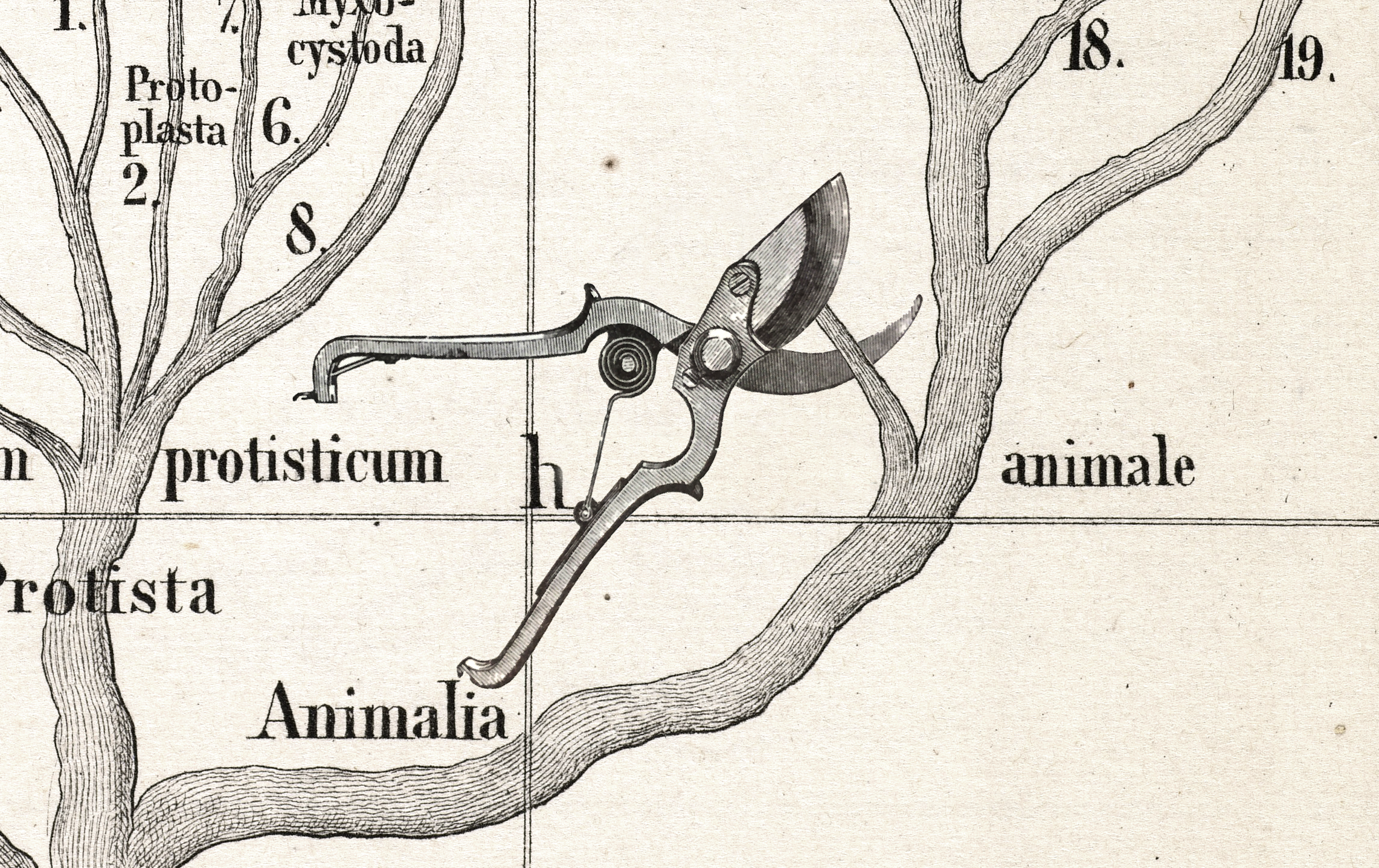Extinction Services
Clients: CBI
Deliverable: CBI
Estimated Completion Date: CBI
Estimated Cost: CBI
Funds Secured: CBI
![]()
Deliverable: CBI
Estimated Completion Date: CBI
Estimated Cost: CBI
Funds Secured: CBI

Overview:
Extinction is a desirable outcome for a variety of client needs ranging from epidemiological vector pruning, to mitigating species aversion disorders, to suppression of emergent synthetic invasives. Research in Aedes aegypti mosquitoes has indicated that gene drives can be used to push deleterious genetic elements into a population such that it may cause the global extinction of their host populations1. Such strategies are merely one of many tools available for this purpose today. This program offers our clients cost-benefit analysis, organism development and propagation strategies towards a successful managed extinction event.
Description:
Extinction is among the most significant moments in the life of a species, second only to the moment of creation. For billions of years extinction has been left to the fickle and and often chaotic forces of chance and nature.
The control of extinction is one of the hallmarks of appearance of human intelligence, along with the discovery of fire and the use of symbols. One of the proposed points of evidence for the start of the geologic age known as the Anthropocene is the orderly phase-out of mega fauna by early human settlers. Large animals such as mammoths, mastodons and saber-toothed tigers were believed to be obstacles to permanent human settlements. Removing these animals from the tree of life, paved the path for the coming era of agriculture and civilization.
These primitive extinction efforts required blunt weaponry, poisons and dangerous labor. They were lengthy and often unsuccessful affairs. Managed Extinction offers the possibility of extinction with minimal contact with the target species. Using stragies such ag gene drives in conjunction with CRPISER/CAS9, a captive population may engineered to possess the heritable and detrimental trait. When released into a wild population the traits propagate through gene drives at a near 100% rate, far outpacing traditional Mendelian genetics. Due to the movement of wild species, the US National Academy of Science recommends this strategy solely for use in global managed extinction efforts.2 Species with longer life cycles are not recommended for this technique.
Reasons for Managed Extinction:
Candidate Extinction Targets:
Extinction is a desirable outcome for a variety of client needs ranging from epidemiological vector pruning, to mitigating species aversion disorders, to suppression of emergent synthetic invasives. Research in Aedes aegypti mosquitoes has indicated that gene drives can be used to push deleterious genetic elements into a population such that it may cause the global extinction of their host populations1. Such strategies are merely one of many tools available for this purpose today. This program offers our clients cost-benefit analysis, organism development and propagation strategies towards a successful managed extinction event.
Description:
Extinction is among the most significant moments in the life of a species, second only to the moment of creation. For billions of years extinction has been left to the fickle and and often chaotic forces of chance and nature.
The control of extinction is one of the hallmarks of appearance of human intelligence, along with the discovery of fire and the use of symbols. One of the proposed points of evidence for the start of the geologic age known as the Anthropocene is the orderly phase-out of mega fauna by early human settlers. Large animals such as mammoths, mastodons and saber-toothed tigers were believed to be obstacles to permanent human settlements. Removing these animals from the tree of life, paved the path for the coming era of agriculture and civilization.
These primitive extinction efforts required blunt weaponry, poisons and dangerous labor. They were lengthy and often unsuccessful affairs. Managed Extinction offers the possibility of extinction with minimal contact with the target species. Using stragies such ag gene drives in conjunction with CRPISER/CAS9, a captive population may engineered to possess the heritable and detrimental trait. When released into a wild population the traits propagate through gene drives at a near 100% rate, far outpacing traditional Mendelian genetics. Due to the movement of wild species, the US National Academy of Science recommends this strategy solely for use in global managed extinction efforts.2 Species with longer life cycles are not recommended for this technique.
Reasons for Managed Extinction:
- Defense against hostile disease vectors (Mosquitoes carrying malaria, dengue & zika)
- Intractable competition over resources (Wolves)
- Unwanted provenance (Invasive species)
- A biological proxy in human warfare (Staple food crops)
- Non-rational factors such as mythological prejudice or yuck-factor (Snakes, Spiders)
- Withdraw of engineered species (Feral herbicide tolerance)
- Re-extinction of previously de-extinct species (Passenger Pigeon, Woolly Mammoth)
Candidate Extinction Targets:
- Asian Knotweed (Fallopia japonica)
- Japanese Kudzu (Pueraria montana)
- Mosquito (Anopheles stephensi, Anopheles gambiae, Aedes aegypti)
- American Cockroach (Periplaneta americana)
- Brown Rat (Rattus exulans)
- American Gray Squirrel (Sciurus carolinensis)
- Asian Silver Carp (Hypophthalmichthys molitrix)
- Pigeon/Dove (Columba livia)
- Feline (Catus domesticus)
- Passenger Pigeon (Ectopistes migratorius)
- Woolly Mammoth (Mammuthus primigenius)
COLOR KEY:
- Preliminary assessment
- Organism development
- Cage trials
- Undergoing live trials in captivity
- Field release
- Re-Extinction (Pending Successful De-extinction)
